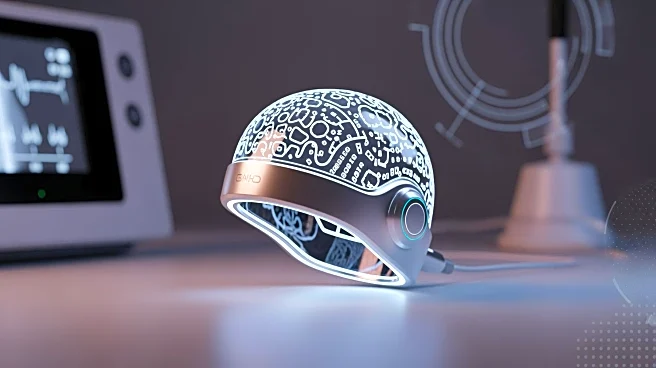What's Happening?
Researchers at the Rosie Maternity Hospital in Cambridge have developed a new 'swimming cap' device that uses light and ultrasound to monitor brain activity in newborns. This innovative technology aims
to improve diagnosis and care for conditions like cerebral palsy and epilepsy. The cap is portable, allowing for regular monitoring from the comfort of a baby's cot, which could offer advantages over traditional MRI and cranial ultrasound scans. The device is part of the Fusion study, which seeks to provide a more complete picture of brain health in newborns, potentially speeding up diagnosis and intervention.
Why It's Important?
The development of this portable brain monitoring cap is crucial for improving care for brain-injured babies. Current monitoring methods struggle to predict the long-term impact of brain injuries, which can lead to lifelong disabilities. By enabling more frequent and comfortable monitoring, the cap could help identify problems earlier, allowing for timely interventions. This technology could transform neonatal care, offering a new tool for healthcare providers to better understand and address brain injuries in newborns.
What's Next?
The researchers plan to continue trials with babies at higher risk of brain damage, aiming to demonstrate the system's effectiveness. If successful, the device could be rolled out across the NHS within three to five years. The study is supported by the NIHR HealthTech Research Centre in Brain Injury, which is committed to developing technologies to improve the lives of people with brain injuries. The researchers hope the cap will eventually be used as a screening tool to identify babies at risk of developmental issues.
Beyond the Headlines
The introduction of this technology could have broader implications for pediatric care, potentially influencing how brain injuries are diagnosed and treated in infants. It highlights the importance of integrating new technologies into healthcare to improve outcomes and reduce the burden of lifelong disabilities. The research also underscores the need for increased capacity among community therapists to meet the demand for early interventions.












